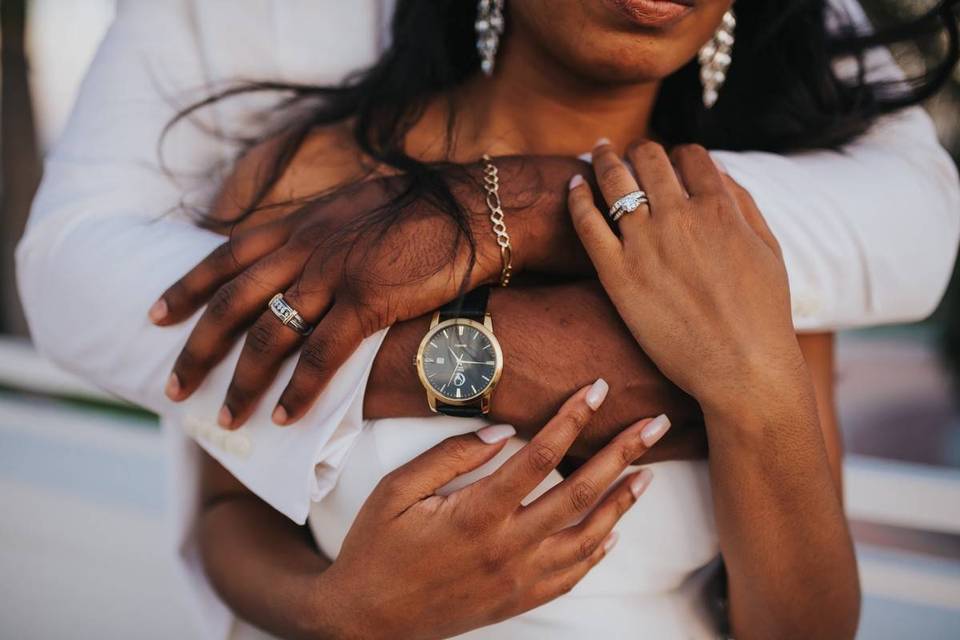5 Marriage Proposal Traditions, Explained
From getting down on one knee to the whole three months' salary thing, there are so many marriage proposal traditions to consider. Here's some background on five of the most common ones.

While modern couples are changing the game for proposals in many ways—think extravagant planning and social media announcements— the time-honored traditions around marriage proposals are surprisingly more popular than ever. A recent WeddingWire survey found that 75 percent of proposers get down on one knee, which is a marriage proposal tradition that dates all way back to Medieval ages and continues to be the standard today.
If you’ve ever found yourself curious about the exact origins of marriage proposal traditions, consider yourself in just the right place. We’re uncovering five traditions around popping the big question, and how their popularity has stood the test of time.
What is the significance of an engagement ring?
In Western cultures today, engagement rings are worn as a visible marker of someone’s intent to be married. While the origins of this tradition are often disputed, it’s likely the engagement ring first began in ancient Roman times when brides-to-be were given rings to wear in both public and private. Additionally, in the Middle Ages, the Visigothic Code dictated that ceremonies of betrothals include a ring stating, "and the ring shall have been given or accepted as a pledge, although nothing may have been committed to writing, the promise shall, under no circumstances, be broken.” The tradition stuck, and most proposals today include an engagement ring.
Why do proposers get down on one knee?
Although the exact origins are unclear, getting down on bended knee is likely a product of Medieval times. In a culture where formality and chivalry is the norm, getting down on one knee was a sign of respect and devotion between knights and lords. According to the Engagement Ring Bible, “when a courteous gentleman was proposing to his lady, pledging his allegiance to her and declaring his undying love for her, getting down on one knee was the natural thing to do.” The bended knee stance is still used by proposers all over the world today and is a favorite shot to snap for that wow-worthy proposal photo.
Why do proposers ask for a parent's blessing?
You might be surprised to learn that about 70 percent of proposers today still ask for a parent’s blessing. The origins of this marriage proposal tradition date back to a time when marriage was seen as a business exchange between families and brides were considered to be the property of their fathers. In today’s modern culture, some view the practice of suitors asking for a father’s permission as wildly outdated, but it certainly doesn’t have to be that way. Many proposers now consider the gesture as a time-honored sign of respect, asking both mom and dad for their “blessing” rather than “permission.”
Why are you supposed to spend three-months' salary on an engagement ring?
A WeddingWire survey found the average amount spent on an engagement ring is $5,000, but tradition once dictated the “right” amount to spend was equal to three months of the groom-to-be’s salary. Interestingly enough, this so-called tradition all started thanks to a clever marketing campaign from a major diamond corporation in the 1930s. Luckily, the three-months' salary rule has become more of a myth in modern culture, as couples opt for an engagement ring price point that works best for them.
Why are women supposed to propose to men on Leap Day?
While you might immediately think of the 2010 rom-com starring Amy Adams and Matthew Goode, this Irish and UK tradition, formally known as Bachelor’s Day, is believed to have originated thanks to a deal made between Saint Bridget and Saint Patrick in the 5th century. According to tradition, women can propose to men on Leap Day, which occurs just once every four years. Hoping to incorporate this marriage proposal tradition into your plans? Keep in mind the next Leap Day just so happens to be February 29, 2020, followed by February 29, 2024.





